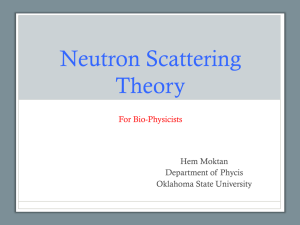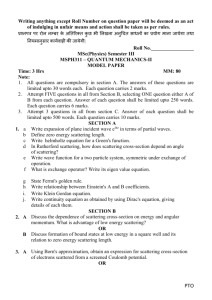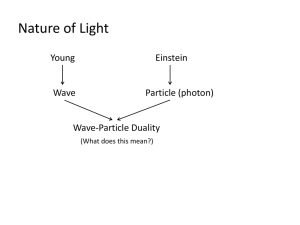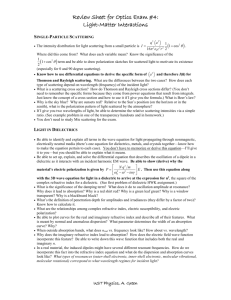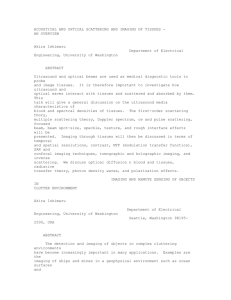Half Scattering
advertisement
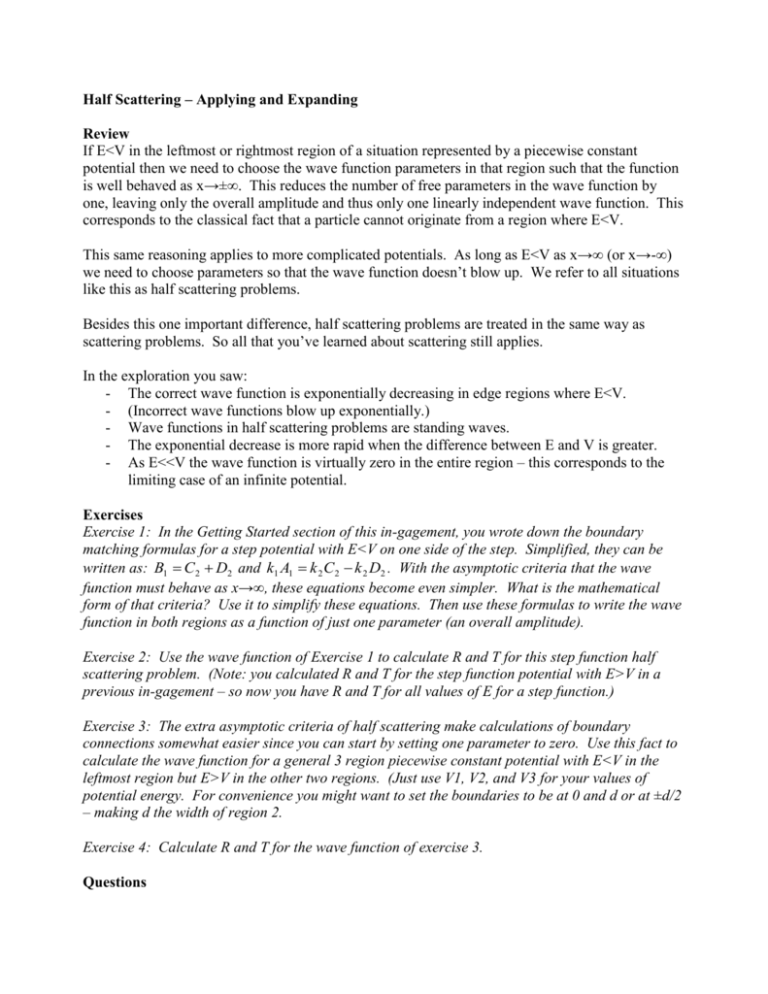
Half Scattering – Applying and Expanding Review If E<V in the leftmost or rightmost region of a situation represented by a piecewise constant potential then we need to choose the wave function parameters in that region such that the function is well behaved as x→±∞. This reduces the number of free parameters in the wave function by one, leaving only the overall amplitude and thus only one linearly independent wave function. This corresponds to the classical fact that a particle cannot originate from a region where E<V. This same reasoning applies to more complicated potentials. As long as E<V as x→∞ (or x→-∞) we need to choose parameters so that the wave function doesn’t blow up. We refer to all situations like this as half scattering problems. Besides this one important difference, half scattering problems are treated in the same way as scattering problems. So all that you’ve learned about scattering still applies. In the exploration you saw: - The correct wave function is exponentially decreasing in edge regions where E<V. - (Incorrect wave functions blow up exponentially.) - Wave functions in half scattering problems are standing waves. - The exponential decrease is more rapid when the difference between E and V is greater. - As E<<V the wave function is virtually zero in the entire region – this corresponds to the limiting case of an infinite potential. Exercises Exercise 1: In the Getting Started section of this in-gagement, you wrote down the boundary matching formulas for a step potential with E<V on one side of the step. Simplified, they can be written as: B1 C2 D2 and k1 A1 k 2 C2 k 2 D2 . With the asymptotic criteria that the wave function must behave as x→∞, these equations become even simpler. What is the mathematical form of that criteria? Use it to simplify these equations. Then use these formulas to write the wave function in both regions as a function of just one parameter (an overall amplitude). Exercise 2: Use the wave function of Exercise 1 to calculate R and T for this step function half scattering problem. (Note: you calculated R and T for the step function potential with E>V in a previous in-gagement – so now you have R and T for all values of E for a step function.) Exercise 3: The extra asymptotic criteria of half scattering make calculations of boundary connections somewhat easier since you can start by setting one parameter to zero. Use this fact to calculate the wave function for a general 3 region piecewise constant potential with E<V in the leftmost region but E>V in the other two regions. (Just use V1, V2, and V3 for your values of potential energy. For convenience you might want to set the boundaries to be at 0 and d or at ±d/2 – making d the width of region 2. Exercise 4: Calculate R and T for the wave function of exercise 3. Questions Question 1: R=1 and T=0 for exercises 2 and 4. Is this what you expect? Explain. Do you think this will be true for all half scattering problems? Explain. Question 2: If R=1 for all half scattering problems then the wave function is always a standing wave. Why? Question 3: Classically, R=1 and T=0 for all situations where E<V in any region. For all the quantum half scattering cases that you have seen this is also true, but for scattering cases with E<V in some middle region R<1 and T>0. How is the quantum case different from the classical? Why? Explain in words a freshman physics major could understand. Projects Project 1: Prove R=1 and T=0 (or find a counter-example) for all piecewise constant onedimensional quantum half scattering problems.
